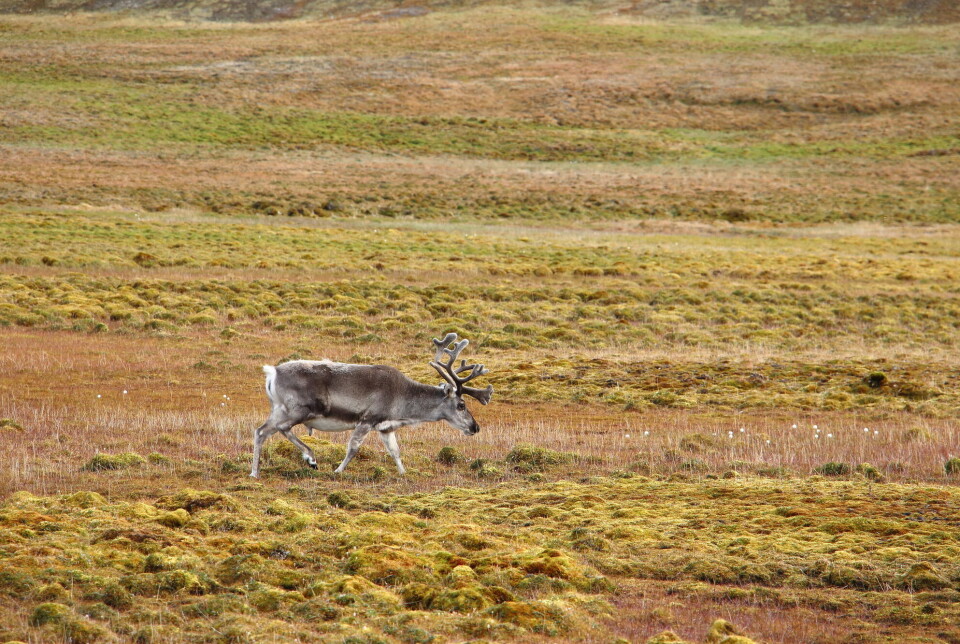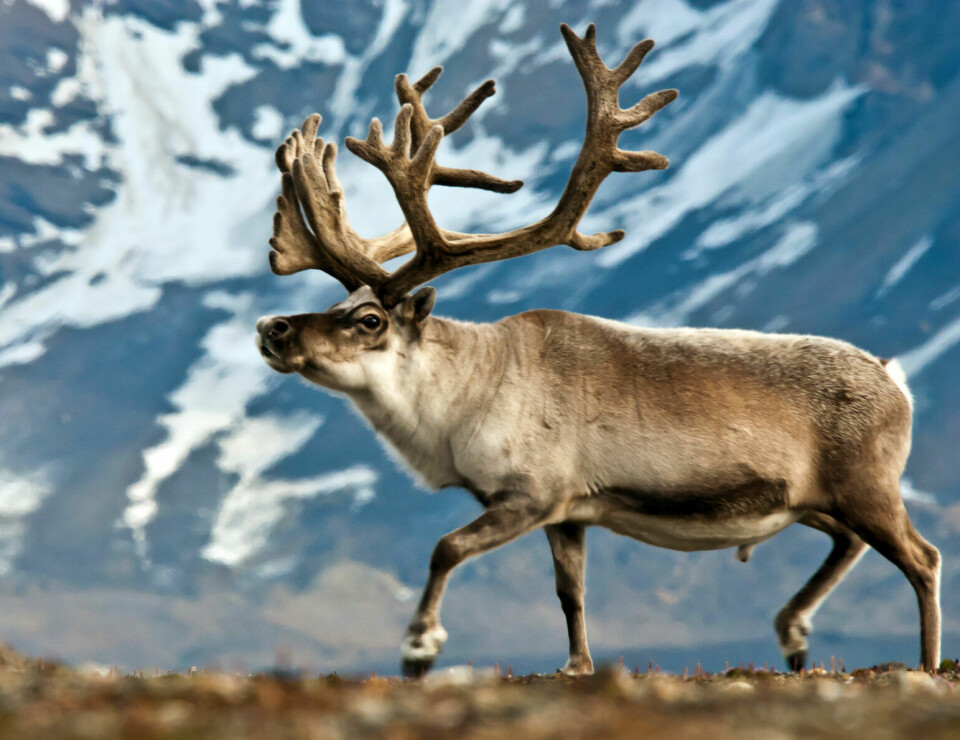
Reindeer in Svalbard are inbred. Is this a problem?
Researchers believe that inbreeding can sometimes be an advantage.
Reindeer have several subspecies, but Svalbard reindeer are the most inbred, according to NTNU researcher Nicolas Dussex in a press release.
The first reindeer found their way to Svalbard between 7,000 and 8,000 years ago.
Perhaps only a few animals were responsible for establishing the herd that exists there today.
Researchers believe this was a poor starting point for a healthy population.
This has nevertheless not prevented the reindeer from taking up residence in Svalbard. Today, there are more than 20,000 reindeer there.
Most viewed
No content
“Despite the low genetic diversity, they have managed to develop a number of adaptations to life in the High Arctic,” Dussex says. The High Arctic is the coldest region in the Arctic.
Different appearance
The NTNU researchers recently had their study published in Current Biology. They analysed genetic samples of 133 reindeer, including 91 from Svalbard.
The researchers were interested in finding out more about how the reindeer subspecies differ from each other genetically.
For one thing, the reindeer on Svalbard can digest moss, whereas other reindeer only eat lichens.
In terms of appearance, Svalbard reindeer have shorter legs, a short snout, small ears, and are completely covered in fur – including their nose and muzzle, according to the Great Norwegian Encyclopedia (link in Norwegian).
The reindeer have developed the ability to digest moss in the absence of lichens, and they have adapted their circadian rhythm to the extreme seasonal variations on Svalbard.
Nearly eradicated in the 1900s
Not long ago, there were far fewer reindeer in Svalbard. They were extensively hunted by humans. According to NTNU researcher Michael D. Martin, they were nearly eradicated in the 1900s.
Such low numbers would normally mean the end of a species, but perhaps not always, the researchers claim.
They explain it like this:
In a population with a high degree of inbreeding, offspring are more likely to inherit harmful mutations from both mother and father. These mutations bring diseases and poorer health.
Offspring carrying these mutations are simply less healthy. It is likely that they will either die before they have the chance to reproduce – or that they will produce fewer offspring.
The likely consequence is that this branch of the family will die out and take the mutations with them to the grave.
Could be an advantage
Paradoxically, inbreeding can in this way be an advantage, the researchers believe, stating that the Svalbard reindeer are doing quite well today.
The researchers link their findings to another study conducted by another research team which included Dussex. He and his colleagues studied parrots in New Zealand that have been isolated on the island for about 10,000 years.
The parrot population was drastically reduced by animals brought to the island by humans. Only 60 individuals remained in 1995.
The population has since risen to around 200, and the researchers found that many harmful genetic variants had disappeared through the long period of inbreeding.
An advantage in some contexts
A study from 2021 showed that inbreeding in the animal kingdom is not taboo.
The researchers reviewed a number of other studies done in the field, and likewise concluded that inbreeding could be an advantage in some contexts.
The findings included that most animals did not try to avoid mating with relatives.
Furthermore, having offspring with a related individual can be an advantage if there are few mates to choose from. The researchers behind that study believed that inbreeding was a good alternative to not continuing the genetic line.
Moving away from their herd – and therefore their relatives – to mate could be risky for many animals.
Inbreeding has both disadvantages and advantages, the researchers behind the study wrote in an article in The Conversation.
Vulnerable to climate change?
In any case, the low genetic diversity in the Svalbard reindeer cannot be ignored.
And while the reindeer were able to adapt quickly to harsher conditions a few thousand years ago, researchers are not sure if they will be able to do the same again.
They fear that the genetic variation may be too low for that, making the Svalbard reindeer vulnerable to climate change.

Not all the animals are healthy
Morten Tryland is a professor at Inland Norway University of Applied Sciences and UiT The Arctic University of Norway. He is an expert on viruses and has studied viruses in reindeer, both in Svalbard and elsewhere.
About a decade ago, Tryland and his colleagues conducted a project in Svalbard where they collected samples from Svalbard reindeer and examined them for a number of viral infections found in both domestic and wild reindeer in other locations.
Svalbard reindeer are occasionally infected with rabies after being bitten by Arctic foxes, but the viruses commonly found in wild reindeer on the mainland were not found in Svalbard. This does not necessarily mean that their health is exclusively good, according to Tryland.
“Most of the animals stay in places where there aren’t many people, meaning that less data is recorded, fewer autopsies are conducted, and fewer samples are taken – and there are also a host of other diseases can also occur in reindeer,” he says.
“So I think it’s difficult, based on the limited knowledge we have today, to conclude that the Svalbard reindeer population is generally healthy compared to other reindeer.”
Low incidence of viral infections
Tryland has also worked with the reindeer population in Iceland and examined reindeer there for the same viral infections.
He says that 35 reindeer were imported from Finnmark to Iceland about 230 years ago. Today, the population is around 6,000 animals.
“We also found a very low incidence of viral infections there,” Tryland says.
He believes Iceland is perhaps even more interesting than Svalbard when studying how inbreeding affects reindeer health.
He emphasises that discussing which genes are linked to good or bad immune systems and which genes predispose or protect against disease is beyond his field.
Could become difficult for the reindeer to find food
The researchers behind the study suspect that low genetic diversity could make it difficult for Svalbard reindeer to adapt to a warmer climate.
Tryland points to some indirect consequences.
“Temperature fluctuations around zero degrees in winter form ice in the snow layer. This means that reindeer lose access to the winter pasture,” he says.
In the case of domesticated reindeer, it may become necessary to help them survive by feeding them.
“They can develop diseases related to the feeding, such as diarrhoea from using the wrong feed or when feeding changes are too abrupt. The incidence of parasites and infections can also increase," he says.
Tryland mentions a study on Svalbard reindeer published earlier this year in the scientific journal Frontiers in Ecology and Evolution.
The researchers carried out genetic investigations and likewise state that the Svalbard reindeer could have an increased risk of diseases due to climate change or increased contact with people due to their limited genetic diversity linked to the immune system.
Parasites are most dependent on climate conditions
Tryland notes that talking about how climate change will affect the health of Svalbard reindeer involves a bit of speculation.
He says climate conditions primarily affect parasites. Bacteria and viruses mostly live only in the host animal and spread between these, whereas parasites can be found in the soil, on plants, in intermediate hosts, or can fly from one place to another.
“Parasites are therefore generally more directly dependent on climate conditions,” Tryland says.
Isolation explains why they look different
Not all the animals on Svalbard are in the same situation. Tryland mentions the Arctic fox that lives there.
“The Arctic fox on Svalbard is not isolated. It migrates to north-western Russia and over to Greenland,” he says. “Genetic studies on Arctic foxes show that there is a high turnover and substantial contact between different land areas in the Arctic, including over frozen seas.”
This contrasts with the reindeer situation. Reindeer in Canada and Alaska migrate through the seasons, but never go to Svalbard, according to Tryland.
“That’s why they also look very different from Norwegian reindeer,” he says.
Animals that are isolated on islands often look very different from their relatives on the mainland, as shown in this study in Science.
———
Translated by Ingrid P. Nuse.
Read the Norwegian version of this article at forskning.no
Reference:
Dussex et al. Adaptation to the High-Arctic island environment despite long-term reduced genetic variation in Svalbard reindeer, iScience, vol. 26, 2023 . DOI: 10.1016/j.isci.2023.107811

































